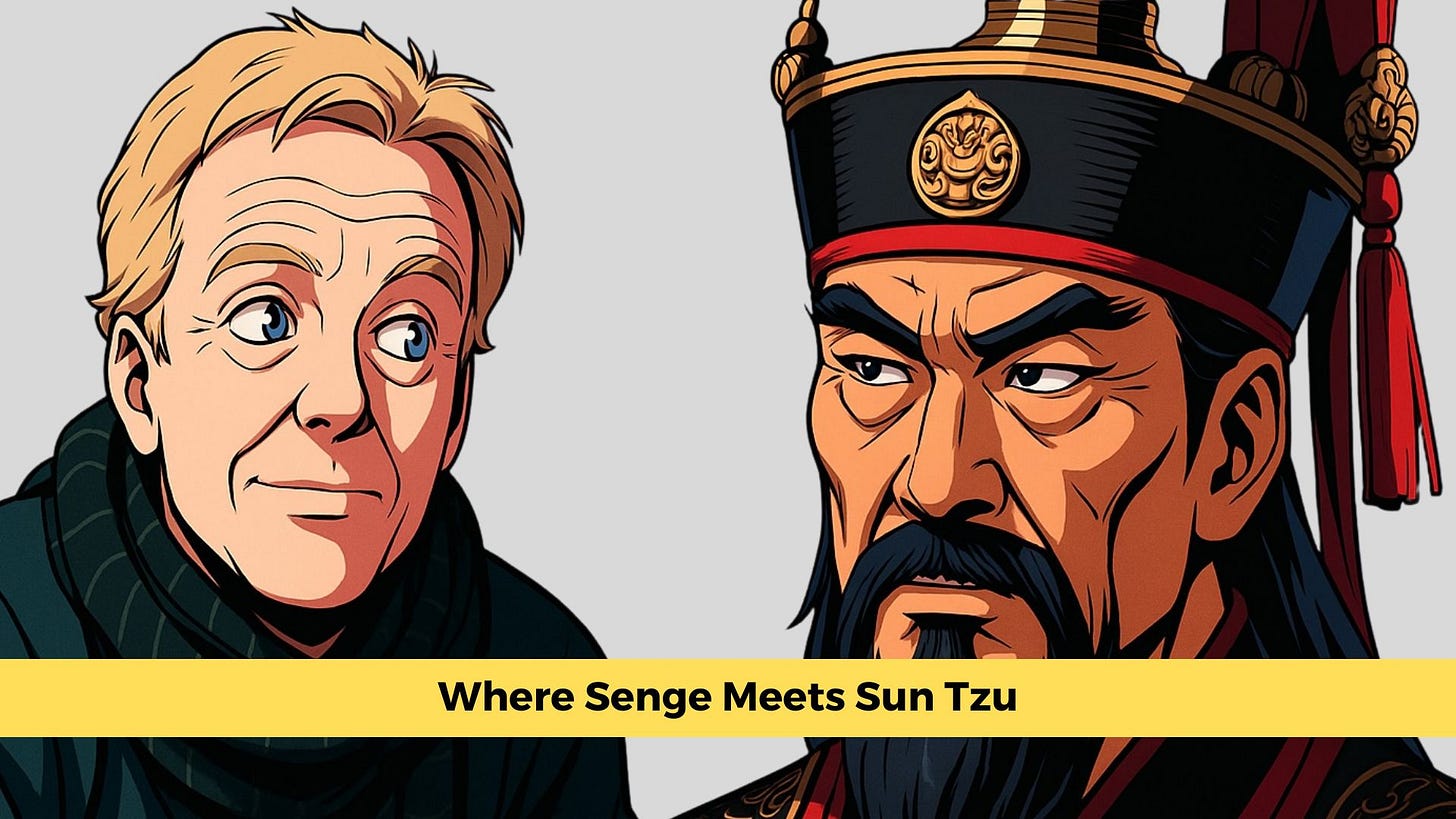The Commander’s Art
Five ancient disciplines for navigating modern complexity - translated from academic theory into battlefield wisdom
War has always been waged in shifting terrain. Once it was hills and rivers. Today it is markets, technologies, alliances, and ecologies that shift beneath a leader’s feet. The enemy is not only the rival company or competing army — it is complexity itself.
These are the five disciplines of command in the age of complexity. Master them together, or watch each fail alone.
1.Mastery Over Self
The first command is over the self. To master the mind is to free it from its own certainties. To master emotion is to steady the hand when the storm rises. To master instinct is to choose, not react. The commander who achieves this need not pretend to know everything — they know what they don’t know.
2. Courage to Burn Old Maps
Every general fights with maps. No map is ever complete. Victory belongs to the one who can march with more than one map in hand — and celebrate when they must discard the one that brought them this far. The commander who never burns old maps ends up fighting the last war twice.
3. Vision Carried, Not Sold
Vision created alone is the vision that dies alone. The strongest banner is woven from the aspirations of those who must carry it into battle. The discipline is not merely to raise the banner, but to weave it from threads you didn’t choose, in colors you didn’t expect, creating something stronger than your imagination alone could design.
4. Council of Many Minds
The strongest councils are those where many tongues speak and many minds spar. The disciplined commander convenes such councils, sits through the discomfort of fundamental disagreement, and draws wisdom not from the voice that speaks loudest but from the pattern that emerges from the clash.
5. The Networked Battlefield
The amateur sees only the enemy in front of them. Yet every battlefield is a node in a larger network. Enemies are dispersed, adaptive, and linked through invisible ties. Action in one place ripples across, triggers counterattacks, and shifts balances once thought stable. Control slips through your fingers if you cling to straight lines.
Why All Five
These disciplines are not tools in a toolkit. They are shields in a phalanx. One gap exposes all.
Mastery over self without courage to burn old maps becomes rigidity.
Shared vision without many minds becomes propaganda.
Council of many minds without network awareness becomes groupthink.
Networked thinking without shared vision becomes paralysis.
The leaders who endure in the age of complexity don’t stack these disciplines one after another. They weave them together, practicing them simultaneously, creating a kind of command not for the battlefields of the past but for the shifting terrain of now.
A certain General Peter Senge once mapped these same battle-tested practices, though he wrapped them in big academic words. This essay is simply a field translation of his doctrine — same edge, fewer syllables, sharper steel.
Doctrine may be written in theory, but command is proven in the field.



